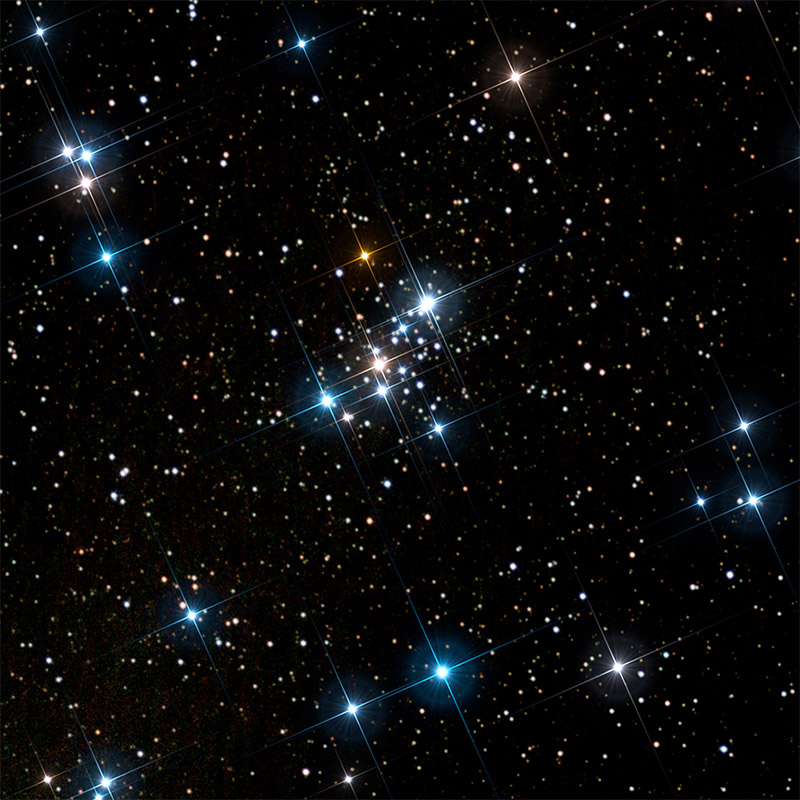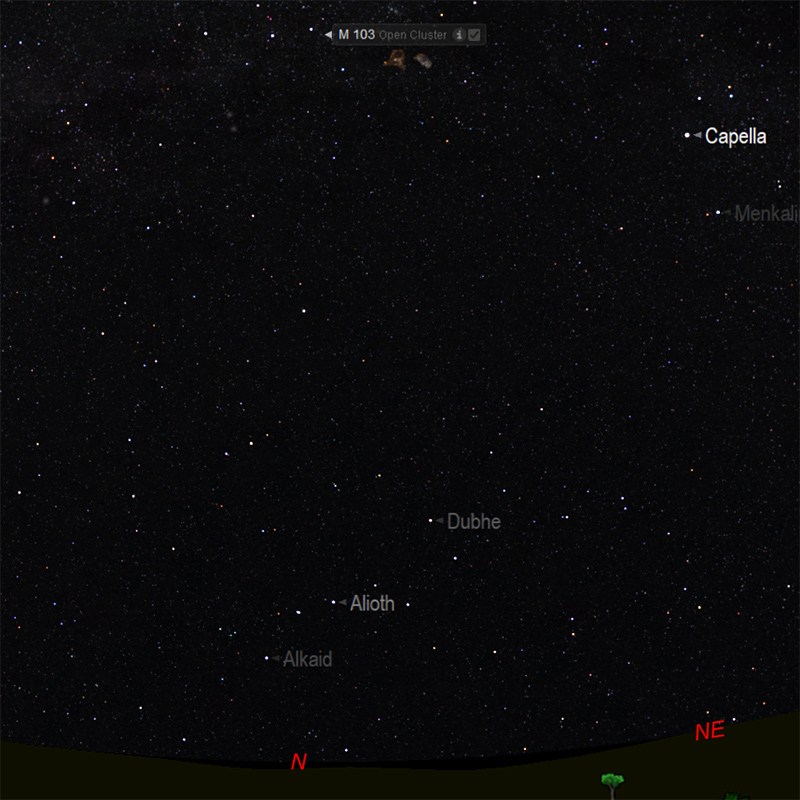M103

Credits: Keith Turnecliff, Long Itchington
Messier 103 (also known as M103, or NGC 581) is an open cluster where a few thousand stars formed in the constellation Cassiopeia. This open cluster was discovered in 1781 by Charles Messier's friend and collaborator Pierre Méchain. It is one of the most distant open clusters known, with distances of 8,000 to 9,500 light-years from the Earth and ranging about 15 light-years apart. There are about 40 member stars within M103, two of which have magnitudes 10.5, and a 10.8 red giant, which is the brightest within the cluster. Observation of M103 is generally dominated by the appearance of Struve 131, though the star is not a member of the 172-star cluster. M103 is about 25 million years old
Facts about M103 by Keith Turnecliff
After the discovery of Messier 101, 102 and 103 in 1781, Messier himself had no occasion to carry out more detailed observations of these clusters and included them as a last-minute addition to his catalogue using the data of Méchain. 4-inch telescopes resolve the four brightest stars in the cluster. Large telescopes resolve more stars across the cluster, but make it harder to make out M103 from the surrounding star field because the cluster is quite loose.
The best time to observe M103 is during the month of November, but northern observers can see it any time of the year.

Best Viewed with resolution 3840 x 2160.
Credits: Image courtesy of Starry Night Pro Plus 8, researched and implemented by Keith Turnecliff.